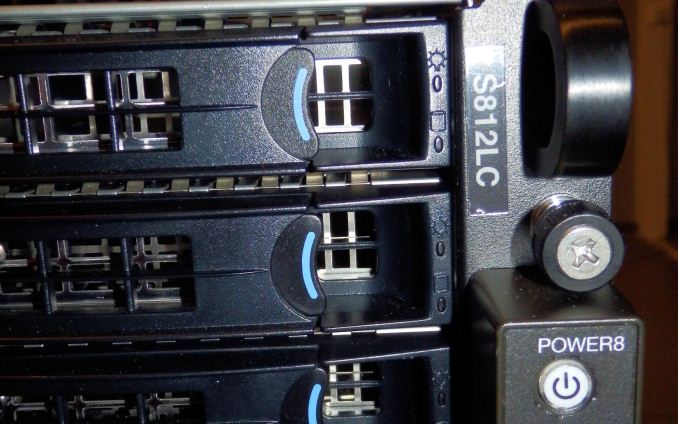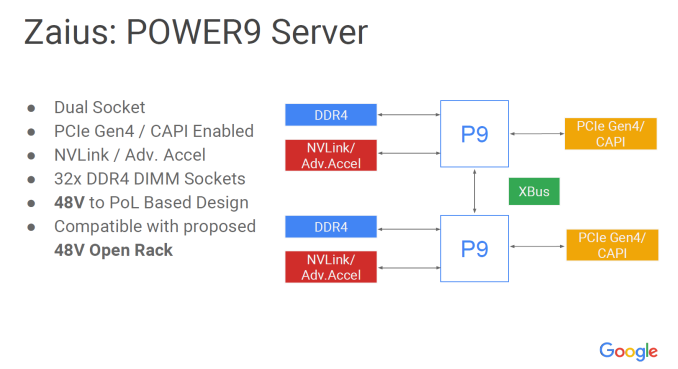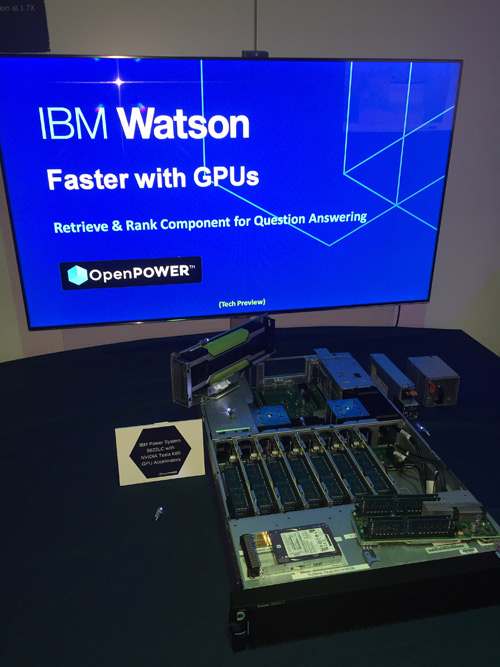Assessing IBM's POWER8, Part 2: Server Applications on OpenPOWER
by Johan De Gelas on September 15, 2016 8:01 AM EST
How serious are IBM's OpenPOWER efforts? It is a question we got a lot after publishing our reviews of the POWER8 and POWER8 servers. Despite the fact that IBM has launched several scale out servers, many people still do not see IBM as a challenger for Intel's midrange Xeon E5 business. Those doubts are understandable if you consider that Linux based systems are only 10% of IBM's Power systems sales. And some of those Linux based systems are high-end scale up servers. Although the available financial info gives us a very murky view, nobody doubts that the Linux based scale out servers are only a tiny part of IBM's revenue. Hence the doubts whether IBM is really serious about the much less profitable midrange server market.
At the same time, IBM's strongholds – mainframes, high-end servers and the associated lucrative software and consulting services – are in a slow but steady decline. Many years ago IBM put into motion plans to turn the ship around, by focusing on Cloud services (Softlayer& Bluemix), Watson (Cognitive applications, AI & Analytics) and ... OpenPOWER. If you pay close attention to what the company has been saying there is little doubt: these three initiatives will make or break IBM's future. And cloud services will be based upon scale out servers.
The story of Watson, the poster child of the new innovative IBM, is even more telling. Watson, probably the most advanced natural language processing software on the planet, started its career on typical IBM Big Iron: a cluster of 90 POWER 750 servers, containing 2880 Power7 CPUs and 16 TB of RAM. We were even surprised that this AI marvel was on the market for no more than 3 million dollars. The next generation for Watson cloud services will be (is?) based upon OpenPOWER hardware: a scale out dual POWER8 server with NVIDIA's K80 GPU accelerator as the basic building block. An OpenPOWER based Watson service is simply much cheaper and faster, even in IBM's own datacenters. But there is more to it than just IBM's internal affairs.
Google: "a simple config change"
Google seems to be quite enthusiastic about OpenPOWER. Google always experimented with different architectures, and told the world more than once that it was playing around with ARM and POWER based servers. However, the plans with OpenPOWER hardware are very tangible and require large investments: Google is actively developing a POWER9 server with Rackspace.

"Zaius, the OpenPOWER POWER9 server of Google and Rackspace"
Google has also publicly stated that "For most Googlers, enabling POWER is a config change". This far transcends the typical "we experimenting with that stuff in the labs".
So no wonder that IBM is giving this currently low revenue but very promising project such a high priority. And the pace increases: IBM just announced even more "OpenPOWER based" servers. The scale out server family is expanding quickly...











49 Comments
View All Comments
PowerOfFacts - Friday, September 16, 2016 - link
trollBOMBOVA - Friday, October 7, 2016 - link
Rich info , good scoutPowerOfFacts - Friday, September 16, 2016 - link
Sigh ....PowerOfFacts - Friday, September 16, 2016 - link
That's strange, this site says you can buy a POWER8 server for $4800. https://www.ibm.com/marketplace/cloud/big-data-inf...Screwed up Power (so many times)? Please explain? Compared to what....SPARC? Itanium? If you are talking about those platforms, POWER has 70% of that marketshare. Do you mean against "Good Enough" Intel? Absolutely Intel is the market leader but only in share as it isn't in innovation. Power still delivers enterprise features for AIX and IBM i customers with features Intel could only dream about. Where the future of the data center is going with Linux, well it did take IBM a while to figure out they couldn't do it their way. Now, they are committed 100% (from my perspective as a non-IBMer while also being committed to AIX & IBM i as their is a solid install base there) which we all see in the form of IBM & even non-IBM solutions built by OpenPOWER partners and ISV solutions using little endian Linux. Yes, there are some workloads that require extra work to optimize but for those already optimized or those which can be optimized, those customers can now buy a server for less money that has the potential to outperform Intel by up to 2X, in a system using innovative technology (CAPI & NVLink) that is more reliable. I don't know, IBM may be late and Power has some work to do but I really don't think you can back up your statement that "IBM has screwed up power so many times". Latest OpenPOWER Summit was a huge success. Here is a Google interview https://www.youtube.com/watch?v=f0qTLlvUB-s&fe...
Oh, but you were probably just trying to be clever and take a few competitive shots.
CajunArson - Saturday, September 17, 2016 - link
Yeah, that $4800 Power server wasn't nearly equivalent to what was benchmarked in this review with the "midrange" server that costs over $11K on the same web page you cited.I could build an 8 or 12 core Xeon that would put the hurt on that low-end Power box for less money and continue to save money during every minute of operation.
JohanAnandtech - Saturday, September 17, 2016 - link
" it will cost anywhere from 5-10X" . What do you base this on? Several SKUs of IBM are in the $1500 range. "Something like $10K for the processor". This seems to be about the high-end. The E7s are in the $4.6-7k range. Even if IBM would charge $10k for the high end CPUs, it is nowhere near being 5x more expensive. Unless I am missing something, you seem to have missed that IBM has a scale out range and is offering much more affordable OpenPOWER CPUs.jesperfrimann - Wednesday, September 21, 2016 - link
IMHO, the place where POWER servers make sense right now, is for use with IBM software. So if you are using something DB2 or WebSphere, where the real cost is the Software licenses.Then it's really a Nobrainer. Not that your local IBM sales Guy will like that you'll do a switch to a Linux@Power solution :)
// Jesper
YukaKun - Thursday, September 15, 2016 - link
For the Java tests, did you change the GC collector settings? Also, why only 24GB for the JVM? I run JBoss with 32GB across our servers. I'd use more, but they still have issues with going to higher levels.Cheers!
madwolfa - Thursday, September 15, 2016 - link
Unless working with huge datasets you want to keep your JVM heap size as reasonably low as possible... otherwise there would be a penalty on GC performance. Granted, with this sort of hardware it would be pretty minuscule, but the general rule of thumb still applies...JohanAnandtech - Thursday, September 15, 2016 - link
No changes to the GC Collector settings. 24 GB for VM = 4x 24 GB + 4x 3 GB for Transaction Injector and 2 GB for the controllor = +/- 110 GB memory. We wanted to run it inside 128 GB as most of our DIMMs are 16 GB at DDR4-2400/2133.